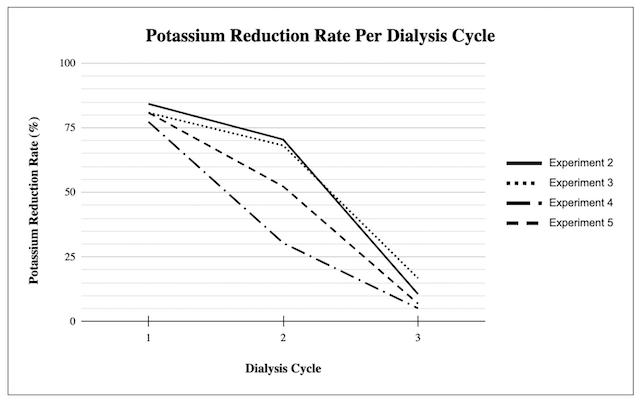Nephrology
Session: Nephrology 3
9 - mSLAMB Dialysis to Potassium Deplete Stored Blood for Potential Use in Children with Severe Malaria Associated Acute Kidney Injury
Sunday, May 5, 2024
3:30 PM - 6:00 PM ET
Poster Number: 9
Publication Number: 9.2209
Publication Number: 9.2209

Rebecca A. Coriolan, MD (she/her/hers)
Pediatric Critical Care Fellow
New York University Grossman School of Medicine
New York, New York, United States
Presenting Author(s)
Background: Acute kidney injury (AKI) remains a common cause of preventable death in low-middle income countries due to cost and lack of dialysis access. AKI occurs in 24-59% of children with severe malaria (SM-AKI) and worsens mortality. Hyperkalemia, an understudied risk factor, occurs in 6% of Ugandan children with SM; coupled with AKI, mortality approaches 40%. Treatment of these children, especially those with severe anemia, becomes challenging, as packed red blood cells (pRBCs) may have high potassium (K+) loads.
Objective: We describe a protocol using the novel manual Single Lumen Alternating Micro-Batch (mSLAMB) dialysis system to deplete pRBCs of K+ prior to transfusion for potential use in children with SM-AKI. We hypothesize that a modified mSLAMB diffusion setup can decrease K+ by >80% in 20 minutes.
Design/Methods: We first measured the K+ in 7 bags of pRBCs. Aliquots of 200mL of pRBCs were diluted with 25mL saline to achieve a hematocrit (Hct) < 50%. Each 225mL “batch” of dilute pRBCs was run through the mSLAMB system using the “Dynamic Technique,” where dialysis fluid is run freely through the filter as blood runs concurrently during forward and return passes. K+ was measured at baseline and after each of 3 cycles to calculate clearance. To reduce the risk of circuit clotting, we positioned the bag heights so that a small amount of dialysis fluid was passively added to the batch each cycle. Active ultrafiltration (UF) via syringe pull was performed during the last cycle to control net volumes.
Results: The median K+ in pRBCs was 70.9 mg/dL (IQR 23.1) in bags from -20 to +16 days from expiration. Four of 5 experiments completed all cycles (1st clotted due to over-filtration) and were included in analyses. Median run time was 20.5 (IQR 5.3) minutes with median cycle time of 6.7 minutes (IQR 1.6). The median baseline K+ was 38.5 mg/dL (IQR 4.6). Median K+ reduction rate (KRR) achieved was 93.2% (IQR 5.3), with the greatest median KRR in cycle 1 (80.9%, IQR 0.03). Minimal clearance occurred by cycle 3 (KRR 8.7%, IQR 3.7). Median starting and ending Hct were 40% (IQR 5.3) and 43% (IQR 7.3), respectively (median change +2.5% (IQR 1.5)). A blood volume reduction of 17.8% (IQR 6.0) was achieved using active UF.
Conclusion(s): The mSLAMB system can effectively remove 90% of K+ in < 30 minutes from stored pRBCs while facilitating volume control. Studies have begun in Uganda to assess the risk posed by transfusion to children with SM-AKI, hyperkalemia, and severe anemia, as this technique may allow a safer means of resuscitating these children.

